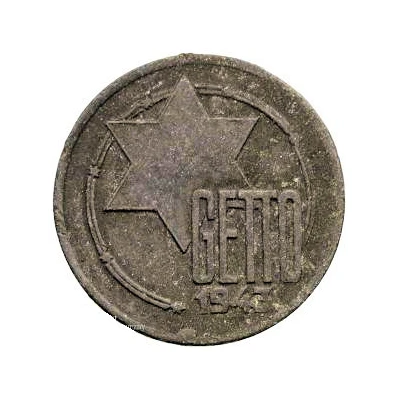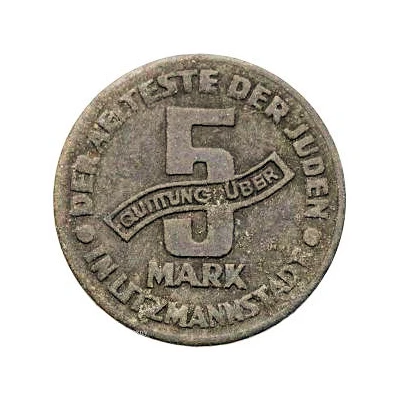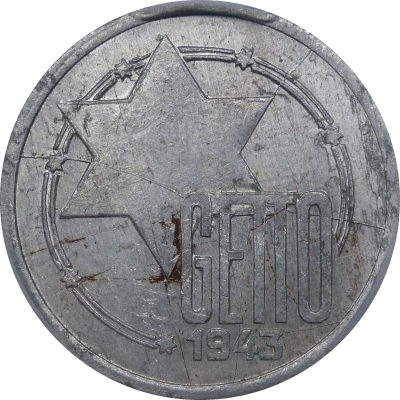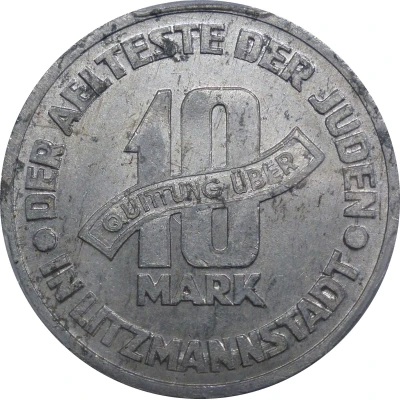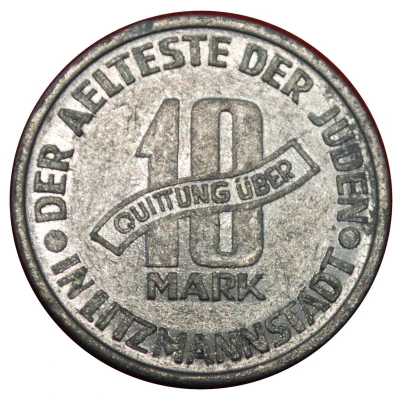
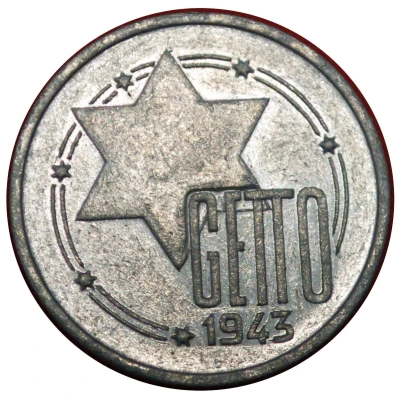

10 Mark Jewish Ghetto Coinage Al, thin planchet
1943 year| Aluminium | 2.6 g | 28.3 mm |
| Issuer | Poland |
|---|---|
| Period | General Government (1939-1944) |
| Type | Token |
| Year | 1943 |
| Value | 10 Mark |
| Currency | Reichsmark (1939-1944) |
| Composition | Aluminium |
| Weight | 2.6 g |
| Diameter | 28.3 mm |
| Thickness | 1.6 mm |
| Shape | Round |
| Technique | Milled |
| Orientation | Medal alignment ↑↑ |
| Demonetized | Yes |
| Updated | 2024-10-07 |
| Numista | N#423323 |
|---|---|
| Rarity index | 95% |
Reverse
Star of David to upper left. Date to lower right. Twin circular lines with 6 evenly spaced stars.
Script: Latin
Lettering:
GETTO
1943
Engraver: Morduch Glezer
Edge
Plain
Comment
Issued only for Litzmannstadt Ghetto (now in Lodz), it was a legal tender trade token. The Ghetto existed from 1939 after invasion of Germany troops in Poland. Due to freedom in 1945 by the Soviet Army during the Great Patriotic War the isolation of the last survived Jewish people ended.
There were three main types which described in Parchimowicz catalog as following:
15a - aluminium, mass 2.6 g, thickness 1.6-1.7 mm (thin planchet, this article)
15b - aluminium, mass 3.4 g, thickness 2.1-2.2 mm (thick planchet article N#10846)
15c - aluminium-magnesium, mass 1.75 g (grey metal, article N#125562)
Interesting fact
One interesting fact about the Token 10 Mark (Jewish Ghetto Coinage Al, thin planchet) 1943 from Poland made of Aluminium weighing 2.6 g is that it was used as a form of currency within the Jewish ghettos during World War II. The Nazi occupation forced Jews to create their own currency, as they were not allowed to use the official currency of the country. This coin was made of aluminum, which was a readily available material at the time, and it was used for small transactions within the ghetto. Despite its small denomination, this coin holds significant historical value as a symbol of resilience and resourcefulness in the face of oppression.
